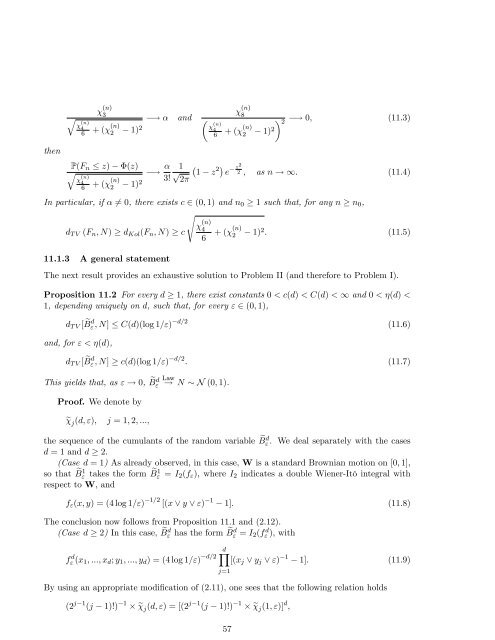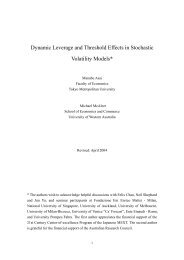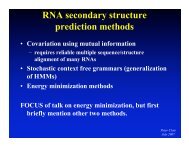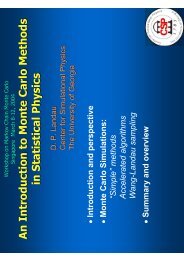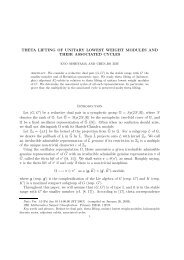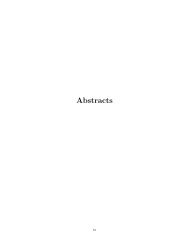Stein's method, Malliavin calculus and infinite-dimensional Gaussian
Stein's method, Malliavin calculus and infinite-dimensional Gaussian
Stein's method, Malliavin calculus and infinite-dimensional Gaussian
Create successful ePaper yourself
Turn your PDF publications into a flip-book with our unique Google optimized e-Paper software.
(n)<br />
3<br />
q<br />
(n)<br />
4<br />
6<br />
+ ( (n)<br />
2 1) 2 ! <strong>and</strong><br />
(n)<br />
8<br />
<br />
(n)<br />
4<br />
6<br />
+ ( (n)<br />
2 1) 2 2<br />
! 0; (11.3)<br />
then<br />
P(F n z) (z)<br />
q<br />
! 1<br />
p 1 z 2 e z2 2 ; as n ! 1: (11.4)<br />
(n)<br />
4<br />
6<br />
+ ( (n)<br />
2 1) 2 3! 2<br />
In particular, if 6= 0, there exists c 2 (0; 1) <strong>and</strong> n 0 1 such that, for any n n 0 ,<br />
s<br />
(n)<br />
4<br />
d T V (F n ; N) d Kol (F n ; N) c<br />
6 + ((n) 2 1) 2 : (11.5)<br />
11.1.3 A general statement<br />
The next result provides an exhaustive solution to Problem II (<strong>and</strong> therefore to Problem I).<br />
Proposition 11.2 For every d 1, there exist constants 0 < c(d) < C(d) < 1 <strong>and</strong> 0 < (d) <<br />
1, depending uniquely on d, such that, for every " 2 (0; 1),<br />
d T V [ e B d " ; N] C(d)(log 1=") d=2 (11.6)<br />
<strong>and</strong>, for " < (d),<br />
d T V [ e B d " ; N] c(d)(log 1=") d=2 : (11.7)<br />
This yields that, as " ! 0, e B d "<br />
Law<br />
! N N (0; 1).<br />
Proof. We denote by<br />
e j (d; "); j = 1; 2; :::;<br />
the sequence of the cumulants of the r<strong>and</strong>om variable e B d " . We deal separately with the cases<br />
d = 1 <strong>and</strong> d 2.<br />
(Case d = 1) As already observed, in this case, W is a st<strong>and</strong>ard Brownian motion on [0; 1],<br />
so that e B 1 " takes the form e B 1 " = I 2 (f " ), where I 2 indicates a double Wiener-Itô integral with<br />
respect to W, <strong>and</strong><br />
f " (x; y) = (4 log 1=") 1=2 [(x _ y _ ") 1 1]: (11.8)<br />
The conclusion now follows from Proposition 11.1 <strong>and</strong> (2.12).<br />
(Case d 2) In this case, e B d " has the form e B d " = I 2 (f d " ), with<br />
f d " (x 1 ; :::; x d ; y 1 ; :::; y d ) = (4 log 1=") d=2<br />
dY<br />
[(x j _ y j _ ") 1 1]: (11.9)<br />
By using an appropriate modi…cation of (2.11), one sees that the following relation holds<br />
j=1<br />
(2 j 1 (j 1)!) 1 e j (d; ") = [(2 j 1 (j 1)!) 1 e j (1; ")] d ;<br />
57


